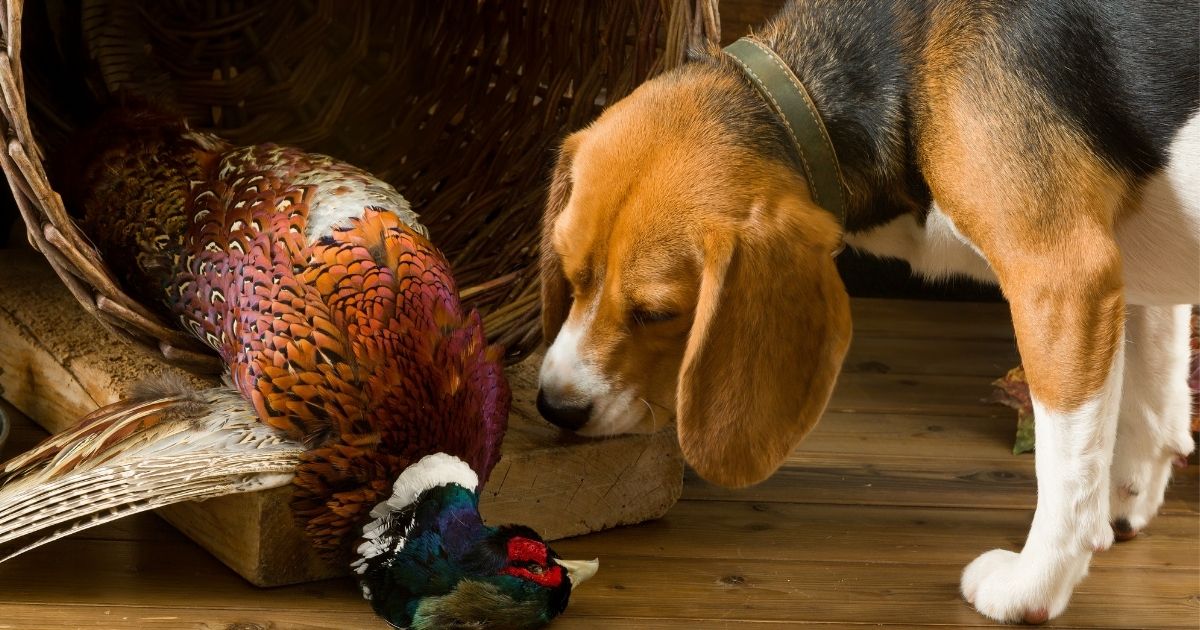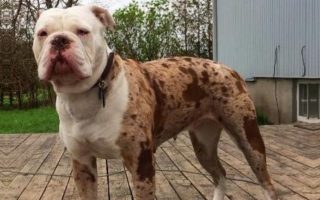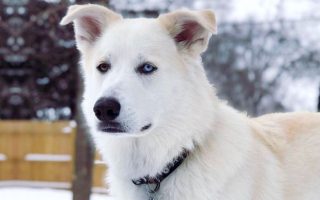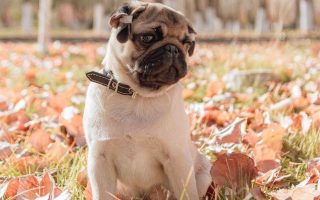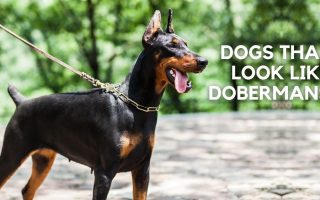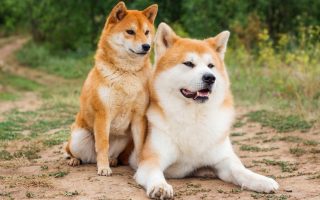There are several reasons why you may or may not want to have one of the breeds of dogs with high prey drive.
Walking a dog is fun. You’re getting some exercise, doggy’s letting out pent-up energy.
It’s a great bonding moment with clear skies, friendly passersby, and a lovely, country terrain… till your dog sights a squirrel darting by.
Suddenly, nothing else matters. Not your commands, you pulling at the leash, nothing.
The world seems to go mute and in slow motion for your dog as he gets only one craving he must fulfill.
If you let the leash slip from your fingers, he will go on a chase with no hesitation.
No, he’s not crazy. Such a dog has a strong prey drive.
So, what does high prey drive mean?
Hunter. Predator. Instinct. These are terms associated with a high prey drive.
These dogs have a strong impulse to hunt animals they view as prey. An impulse they can’t resist.
Predator dogs come with many traits that make them good hunters: a strong sense of smell (or sight), a strong will, an independent mind, energy, and an elevated prey drive.
Their transitions into household pets don’t change their hunting foundation.
Why you might want a dog with a strong prey drive?
One might be wondering, is getting a hunting dog for a companion really worth it?
First, for obvious reasons, modern-day hunters would prefer these dogs.
Also, if you’re a farmer who wants a dog that can protect your livestock from animals like wolves, dogs with high prey drive are your best shot.
A lot of them make excellent guard dogs, watchdogs, and worked with law enforcement.
With that in mind, here’s a compilation of dog breeds with a high prey drive.
Related: Dog Breeds With Low Prey Drive
Top 15 Dogs With High Prey Drive
What dog has the highest prey drive? With so many of them around, it’s a hard pick. Here’s a list of canines that could take the crown.
1. Alaskan Malamutes
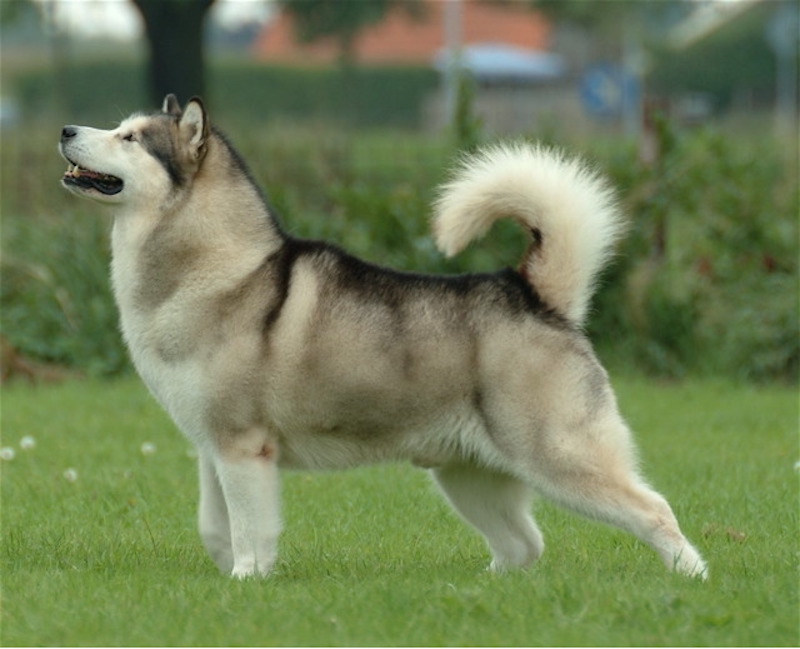
Coming as the first on our list is a wolf-like dog who is Alaska’s state dog.
Alaskan Malamutes have existed for many millennia.
This breed is one of the oldest sled dogs and has wolves as ancestors—which probably explains why your smaller pets may not be safe around them.
Wolf-like features notwithstanding, the Alaskan Malamute is a friendly dog who’s trainable. He’s a good alternative for those who love the wild looks of a wolf but wouldn’t want their yard to become a zoo.
They don’t mind cuddling and showing affection to their owners. They also remain devoted to those they love, an attribute that endears many to them.
Because of their friendliness, they don’t make good guard dogs and watchdogs. Their appearance is enough to chase away an intruder, though.
Alaskan Malamutes are highly energetic and workers. Both traits mean they won’t stay still if they lack exercise.
Without sufficient activities, don’t blame a Malamute if he gets destructive. This breed needs at least an hour or two of intense exercise.
Training isn’t a walk in the park with these dogs, though. They are not suitable first-time dogs and new owners are not advised to own one.
Add their independent mind to their crazy energy and you can imagine what a handful they’d be. Without firm, consistent training, you won’t go far with the Malamute.
Related: Wolfish Dogs That Look Like Huskies But Are Not
2. Afghan Hound
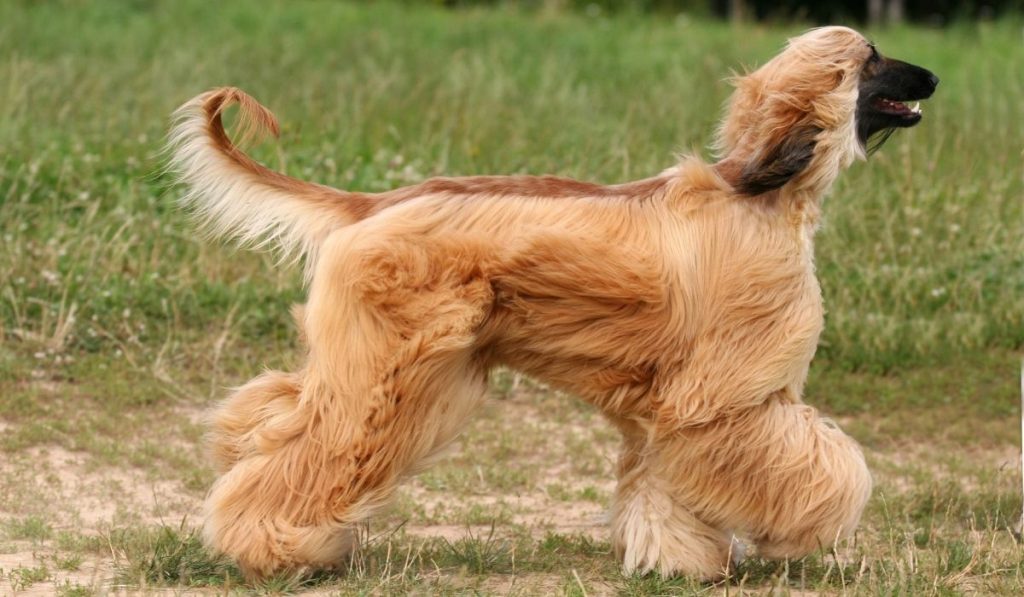
A hunting dog with class and elegance, the Afghan Hound is a head-turner. She has an exotic coat that makes you want to run your hand over it.
Life isn’t all glitz and glamor for the Afghan Hound, though. This breed is a formidable hunter, used to cornering prey before alerting their master.
If your idea of a pet involves cuddles, hugs, and bonding moments on the sofa, here’s a quick counsel: scrap the Afghan off your list.
As puppies, they don’t mind mushy moments. However, an adult Afghan Hound isn’t a fan of cheesiness. He’s a hunter and a worker, not a lovey-dovey.
The Afghan can be reserved, even with family. Busy people would appreciate the independence of the Afghan.
Their reserved nature doesn’t mean they are unaffectionate, though. As long as you respect their need for space, the Afghan has moments when he wants to play and pull some pranks.
He is also compassionate, which means his loyalty remains with you and no one else. Afghan Hounds can be sensitive, as well. A tiny injury is enough to get him whimpering.
Like the Malamute, Afghan Hounds aren’t suitable for new pet parents.
Their paradoxical personality may be confusing for the inexperienced, and the independent streak makes it difficult for them to comply.
Another tasking aspect of taking care of the Afghan Hound is grooming. That beautiful physique isn’t a product of fairy god magic.
The Afghan Hound is a lovely addition to a household and puts in some aesthetics to your environment, as long as you can handle the breed’s antics.
Related: Fastest Dog Breeds in the World
3. Doberman Pinscher
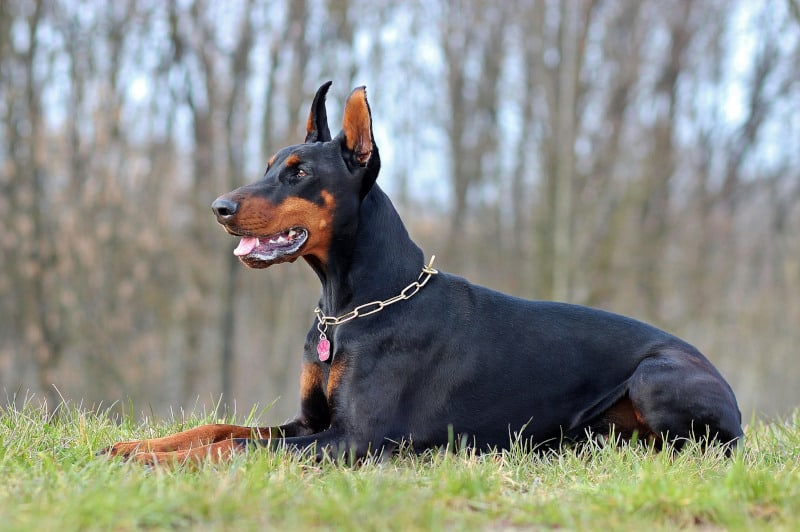
Doberman is another noble breed who came from Germany and was bred to be a guard dog.
While it is unclear which breeds they descended from, they have ties with the Rottweiler, Black and Tan Terrier, and a couple of others.
They are working dogs who have worked with law enforcement officers and the military. Really, it shouldn’t come as a surprise that they have a high prey drive.
A relatively new breed, the Doberman Pinscher suffers a bad reputation that does no justice to his true nature.
While people see them as aggressive and ferocious, they actually are gentle and loving.
Unless provoked—or left untrained—they are not driven to unnecessary aggression.
As a guard, Dobbie makes protecting his family a priority. He’s a bold guardian who doesn’t hesitate to defend those he loves in the face of danger.
He gets along with family members and is polite with kind guests, but he won’t extend that courtesy to intruders.
A highly energetic and stubborn breed, the Doberman Pinscher gives his owner a challenge to train and exercise.
Like other dog breeds we’ve mentioned, only experienced owners who know how to lead a pack should handle this breed.
If you fancy a security dog, the Doberman Pinscher is one of the best.
4. Jack Russell Terrier
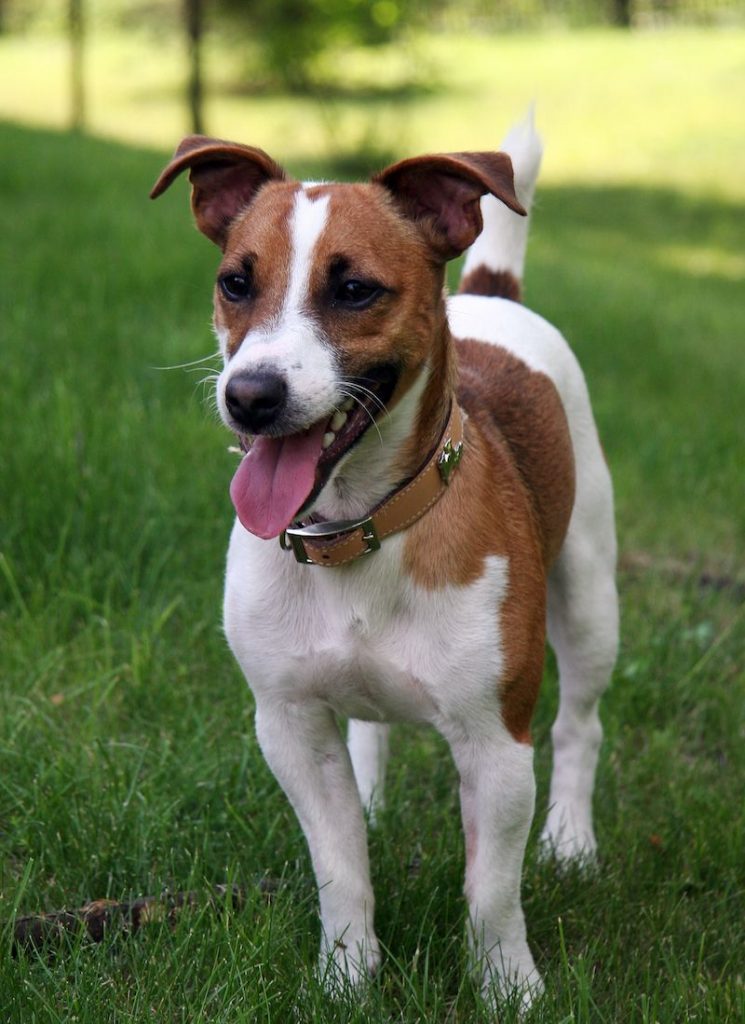
Originally developed to hunt foxes, the Jack Russell Terrier kept his high prey drive intact.
This isn’t good news for those who want peace and harmony among a dog and cat in their homes, nor is it good for anyone who wants a home with multiple pets.
If those aren’t issues to you, read on.
The Jack Russell Terrier has an admirable joie de vivre quality that he passes on to his owner.
With high spirits, energy and playfulness, he has a big personality to make up for his small frame.
This personality got him through hunting foxes and earning the approval of huntsmen with his intelligence and courage.
If you don’t intervene, the Jack Russell Terrier can take on a dog bigger than him. Limitation isn’t in his vocabulary.
Jackie’s a charmer, fun lover, and athlete. An owner with an active lifestyle and a love for the outdoors will find in this breed a tireless companion.
Games are his thing, and he’s a superb competitor.
Due to his size, new pet parents may assume he’s easy to train. Make no mistake, Jack Russell Terrier isn’t an easygoing, laid-back poodle.
Shaping him into a well-mannered dog takes time, and so we advise all novice owners to look for a less erratic breed.
In the hands of an experienced, confident pet parent, the Jack Russell Terrier offers an adventure.
5. Siberian Husky

Another sledder from the freezing region of Siberia, the Siberian Husky worked in pack to pull sleds across the snow.
This mode of transportation was the only way to get across all that frozen water. Obviously, the Siberian Husky is a tough dog with a load of stamina.
They also consider a lot of smaller animals as prey, a situation that should best be avoided by keeping them away from cats.
The Siberian Husky isn’t just a worker, sledder, and feline menace, though. He has integrated into households where he remains a charming, social, fella.
They show love to everyone, a trait which makes them good companions but mediocre watchdogs and guard dogs.
Meanwhile, though they howl occasionally, they don’t bark.
Like the Afghan Hound, the Siberian Husky is pleasing to the eyes. People pick them out easily amongst a crowd of dogs.
However, for many pet parents, it ends up being a case of glittering objects not always being gold.
The Siberian Husky is a stubborn, dominant breed who’d only respect you if you assert yourself as leader of the pack. Even then, they would try to take over.
Training a Siberian Husky involves consistency, patience, confidence, and a good dose of experience. This is not a breed fit for everyone.
Those who have been blinded to the challenges of the Siberian Husky because of his beauty end up disappointed.
The previous paragraph shouldn’t deter you, however, if you can handle a tough dog. The experience is rewarding with the Siberian Husky.
Related: Cool Husky Dog Names For Male & Female Huskies
6. Samoyed
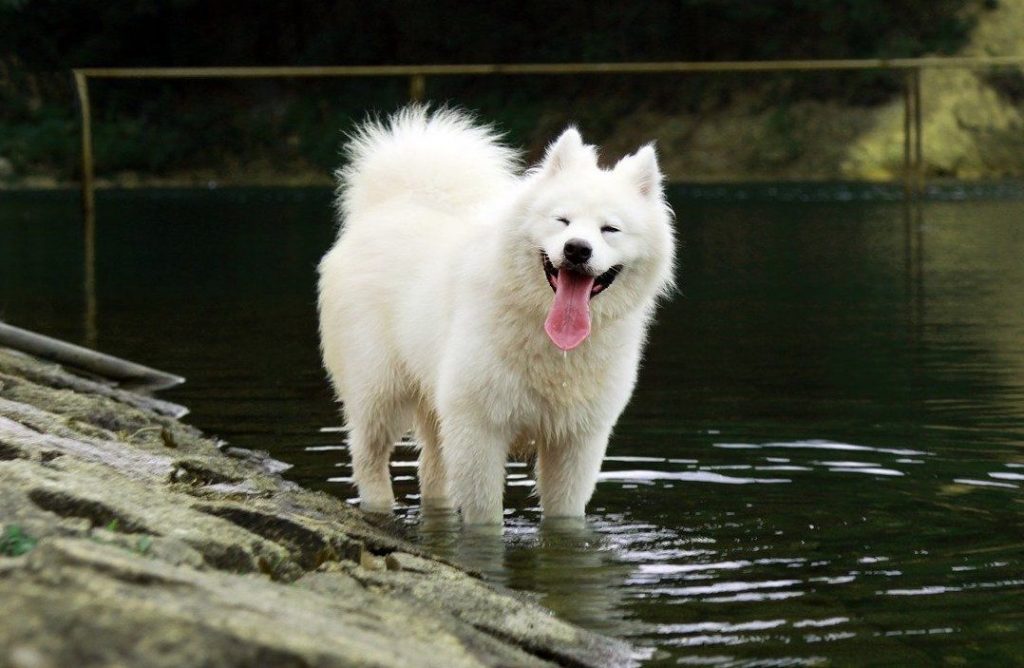
The Samoyed has a lot of work qualifications in his canine resume.
He’s a hunter, herder of reindeers, a companion to the Samoyede tribe, tracker, body warmer…and the list goes on.
Such a versatile worker would certainly have some innate traits, including energy and a high prey drive.
A dog breed with a will of steel, the Samoyed is a tough nut. However, he’s also a friendly, happy dog who makes you look at the optimistic side of life.
He is the dog to have around during sad days as he is guaranteed to lift the blues.
While he is devoted and shares affection with everyone in the family, he often ends up bonding with a particular person. It may be you, your spouse, or one of your kids.
Another gorgeous dog with an impeccable white coat, the Samoyed would attract the attention of guests and strangers at the park.
Luckily, he’s used to the attention. Samoyeds don’t do well in isolation and being left alone for long can affect him.
Taking into account his tough nature, the Samoyed is not for everyone.
It takes a lot to train him. If you get into it without experience, you may give up halfway. Grooming that white coat doesn’t come easy too.
Having said that, the Samoyed is a good household pet for those who don’t mind shedding and can give him enough training.
Related: Dogs That Look Like Huskies
7. Australian Cattle Dog
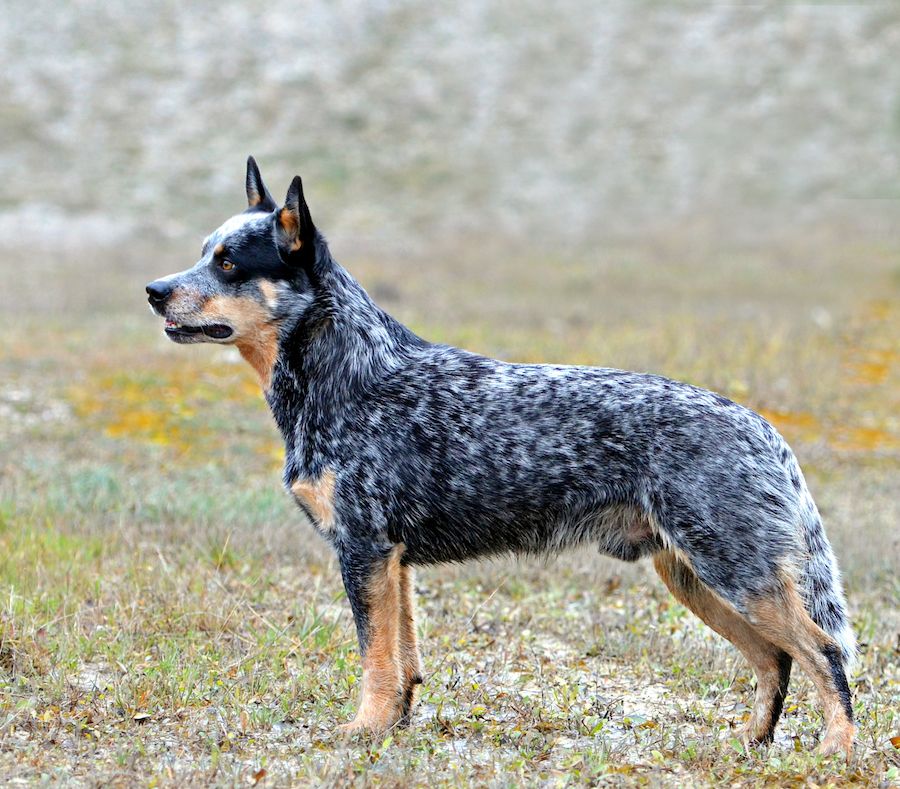
As the name implies, the Australian Cattle Dog was developed to herd cattle in the fields of Australia.
He loses concentration at the sight of prey, so cats and rodents are a no unless you raise them together.
Even if he does live in peace with your family pets, he won’t show such restraint with outside animals.
A friendly, affectionate dog, the Australian Cattle Dog is a ‘Velcro Dog’ because he loves to attach to a particular member of the family.
However, this doesn’t mean he is an indoor pet who’d snuggle all day. You can’t use ‘Couch Potato’ to qualify this breed.
With so much energy to spare, exercise must be incorporated into his—and your—daily schedule.
With strangers, the Australian Cattle Dog is wary and reserved. He’s defensive of his turf, as well, and would take on any perceived threat. This cattle herder is a guardian too.
One challenge you’d face with the Australian Cattle Dog is his habit of nipping at people’s heels to try ‘herding’ them. Though not painful, it gets annoying.
They also bite, and not necessarily as a sign of aggression.
Add stubbornness and independence to the bowl and you’d realize the Australian Cattle Dog is not for the faint of heart.
8. Basenji

From the African Continent, the Basenji is a hunter with an interesting twist. While other hunting dogs rely on either sound or sight to hunt, the Basenji uses both.
He’s a hunting ‘Jack of all trades’ amongst dogs. In old villages, they were essential tools for rodent control. Hamsters and rabbits won’t be safe around these guys.
As a hound, Basenji doesn’t lack intelligence. He employed that to fetch out prey and capture them for hunters.
Added to that intelligence is a sense of independence and alertness, qualities that make him a good watchdog.
As a companion, he is affectionate and loving. The Basenji plays too, but he isn’t the type to get dirty. Dogs of this breed are concerned about their appearance.
The Basenji also pushes the owner to keep his environment clean. Chewing random objects is a favorite pastime for them, but ‘random’ may mean ‘precious’ to you.
Another attribute to note is that the Basenji doesn’t bark. This should be good news, except in the place of barking they make other sounds that may be uncomfortable.
Unlike aforementioned dog breeds, the Basenji can be a first-time dog. However, as a new pet parent, know what you’re getting into before considering the Basenji.
While he is fairly easy to train and can adapt to different environments, the Basenji is also stubborn and energetic.
9. Yorkshire Terrier
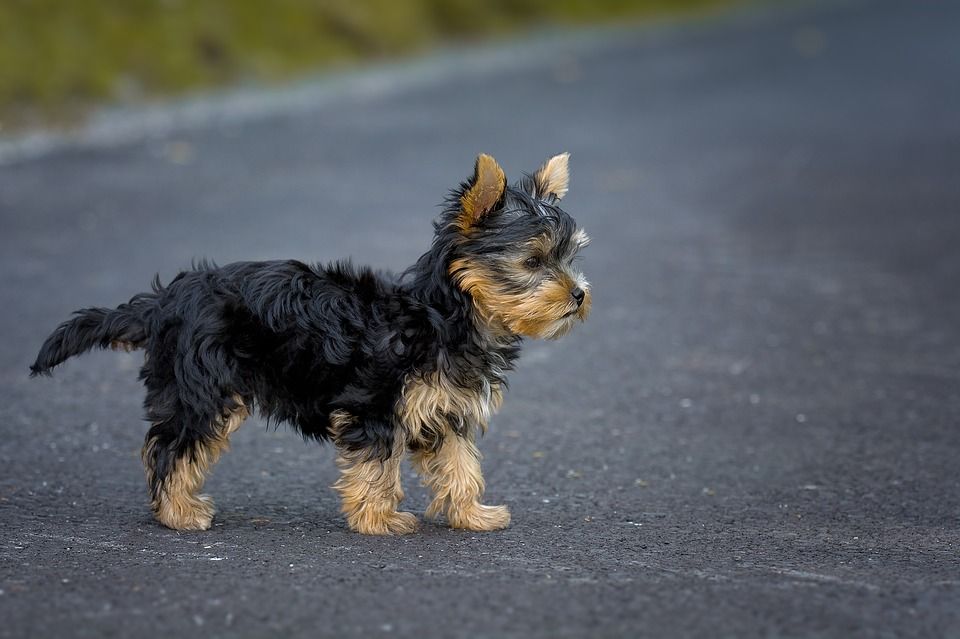
The Yorkshire Terrier is popular, ranking at 1st place on the list of popular toy dog breeds in the United States and top 10 on the list of popular dog breeds.
While their size makes them suitable for companionship, they also were used to hunt rodents, a work they did well.
With celebrity vibes and glamor to match, the Yorkshire Terrier is an eye-catcher.
A smart, confident breed, the Yorkshire Terrier tends to forget he is a small dog.
Unless you restrain them, they’d take on a dog twice their size. For their safety, it is best to curb this.
Yorkshire Terriers are suitable for apartment living, and city dwellers fancy the spunk of this breed.
Their courageous personality has a flip side, though. There’s a softie in that Terrier armor, and if you shield them too much from life, you risk ending up with an anxious dog.
Like the Basenji, new owners can take on the challenge of training the Yorkshire Terrier.
Their exercise need isn’t too high, and they are content with a couple of minutes’ walk in a day. Some of them are quiet and cuddly, others prefer the outdoors.
Here’s a word of caution, though. Train the Yorkshire Terrier with the same firmness you’d use with a big dog to prevent small dog syndrome.
Yorkshire is a cool companion and a travel buddy you can keep in your purse.
If you love small, cute dogs, this Terrier is for you. Don’t keep him in a house with rodents, anyways.
10. Shiba Inu
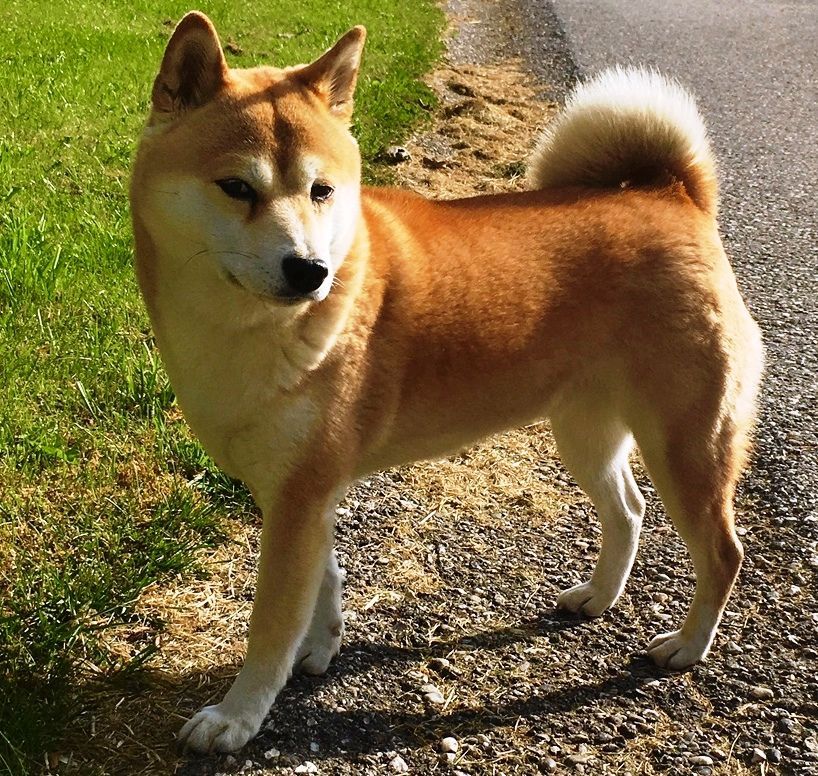
A native of Japan, the Shiba Inu is the smallest Japanese dog breed and is popular there. They are equally the oldest Japanese breed.
They were hunters from their prime before becoming a household companion. With their soft movements akin to a cat, prey don’t stand a chance.
A bold, confident breed, the Shiba Inu comes across as haughty to those who are not accustomed to this way. When you get closer, you notice a loyal, interesting breed.
This doesn’t mean there isn’t some truth in the assumption that the Shiba Inu is haughty. With a dignified posture, calmness, and independence, the Shiba Inu is a stubborn breed.
He’s not a dog you’d expect to be eager to please. Instead, he is a freethinker who may or may not do what you want.
If you’re not used to a dog who likes to do things his own way, the Shiba Inu may push you to the wall. You need a lot of patience to handle this breed.
The Shiba Inu is also possessive of his property. His toys are his alone and he doesn’t like to share.
This may be a problem if you have small children or other pets who may want to collect the Shiba Inu’s toys.
He’d react by being quarrelsome, an act that may lead to injury. Keep his favorite toys away from the prying hands of your kids and other animals.
11. Rhodesian Ridgeback
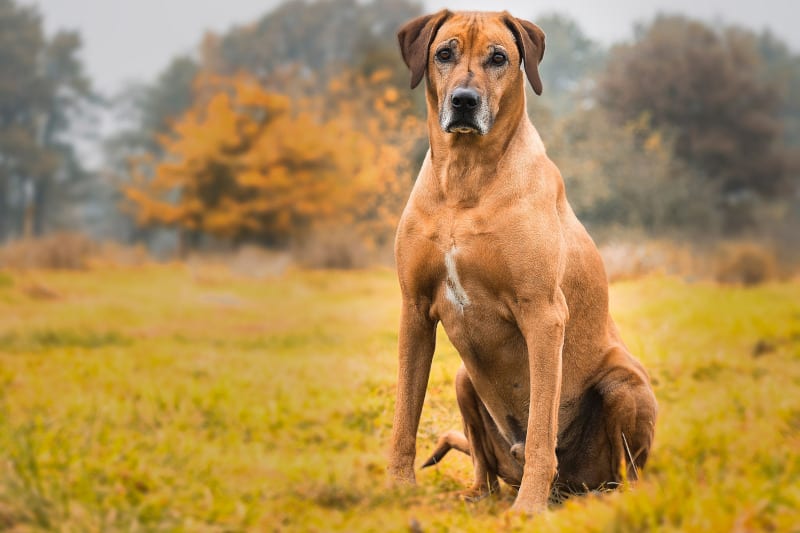
Going by the moniker ‘The Lion Hound’, the Rhodesian Ridgeback is a South African dog breed known for its superb hunting skills.
The Rhodesian Ridgeback was used to hunt lions, and the King of the jungle found a formidable opponent in this breed. Really, what chances does a cat have?
As a puppy, the Ridgeback is a boisterous ball with a lot of energy that keeps him active. When he grows, he becomes more reserved with a manageable energy level.
He is especially withdrawn around unfamiliar faces and places but shows gentleness when he’s home with family.
While the Rhodesian Ridgeback needs a home with a large yard, he can cope in an apartment provided he gets regular exercise. Luckily, his exercise need is moderate.
The good qualities notwithstanding, the Lion Hound is hard to train and is not a good pet for new pet parents.
He can be too much to handle if you’ve not trained a dog before. Only the experienced can cope with the stubborn nature of this breed. To train them, you should be firm, but not harsh.
12. Bullmastiff
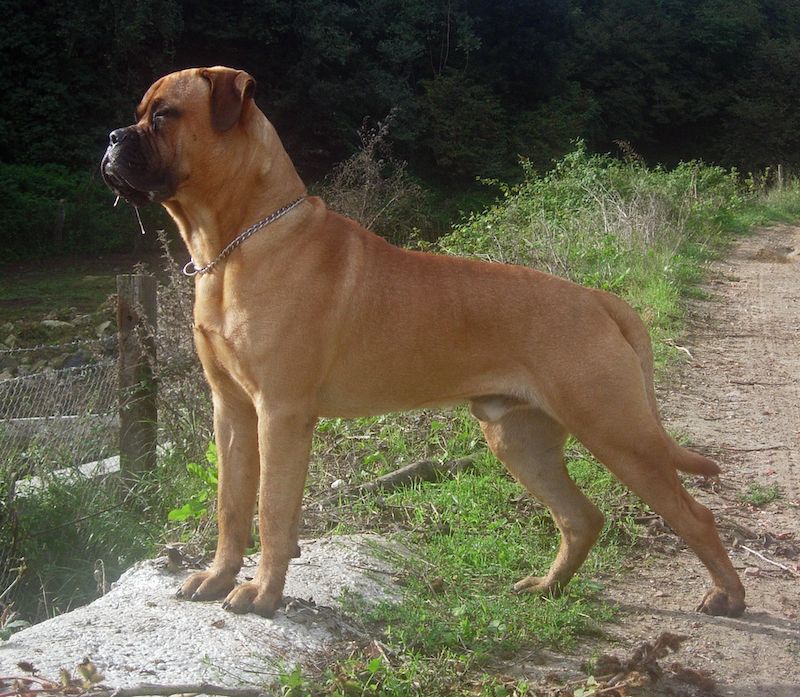
A family guardian at his best, the Bullmastiff is an English breed developed in the 1860s.
Some of the qualities breeders wanted him to have were speed, strength, and courage.
With a Mastiff and Bulldog, they got a Bullmastiff, a strong guard, and a ‘silent watchdog’.
The Bullmastiff was used to catch poachers and still have the instinct to dash after a moving object.
If their size doesn’t scare off an intruder, their action will. The Bullmastiff will protect his loved ones before you’re through spelling his name.
Their work isn’t limited to being guardians, however. Bullmastiffs are good family companions.
While their physique may make you believe they’ve got bursting energy, in reality, they’ve got a moderate energy level. Exercise should be limited to a short stroll and a couple of games.
Puppies come with a lot of energy which subsides as they get older.
Their energy level can make them live in an apartment, but you need to consider their tendency to drool. You shouldn’t get a Bullmastiff if you can’t cope with wiping slobber.
Bullmastiffs are not too difficult to train, but they are not easy either.
They’ve got the same independent streak similar to many other dog breeds on this list. Firmness should be observed.
13. Whippet
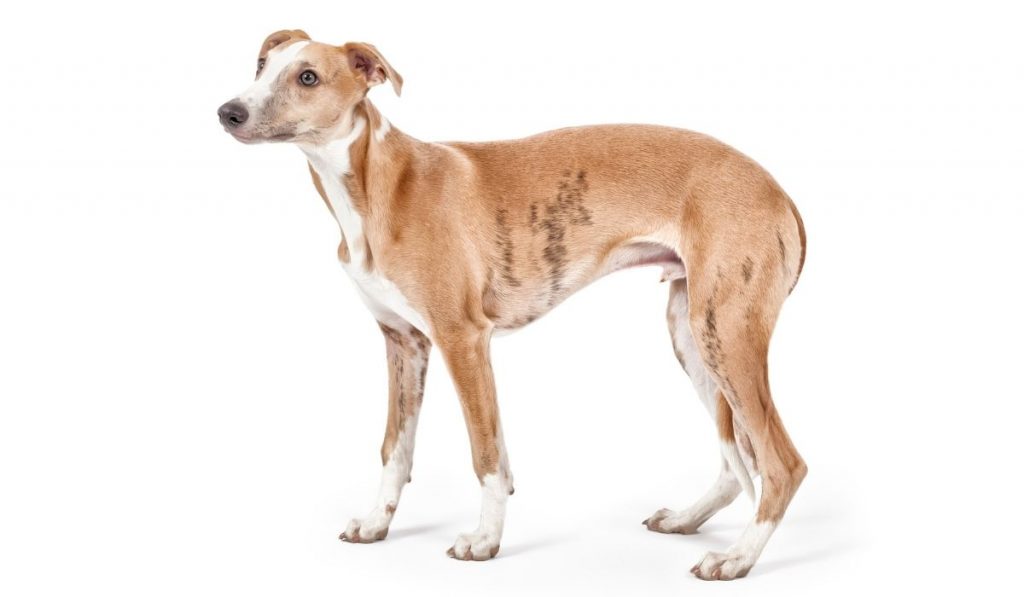
Whippets are hound dogs with enough speed to match the pace of hopping rabbits, the game they hunted.
After serving as hunter’s companions for years, they became household pets and have been playing a good job so far.
They are athletes, as well, and comfort people by playing the role of therapy dogs.
Such a dog breed would be of interest to many people, except those who want rabbits.
Their name is an old word that means ‘to move briskly’, and speed is a big asset for these dogs.
However, speed is not the only asset they have. With a friendly disposition, an optimistic spirit, and a gentle nature, Whippets have secured their places in homes.
They are friendly to strangers too and would want to say hello rather than get aggressive to a new face.
Of course, as hunters they are, it shouldn’t be a surprise that they have an independent side.
It does make it more of a task to train them, and you need experience to curb some excesses and teach them proper canine manners.
Whippets can get by in a living room without a fuss, as long as you exercise them.
That high energy that gave them enough stamina to dash after prey should be used up. You don’t want a restless Whippet in your hands.
Do note that, while you can socialize a Whippet to accept cats, it is risky to leave this dog breed alone with one. Word on the street says some cats didn’t survive that interaction.
14. Airedale Terrier
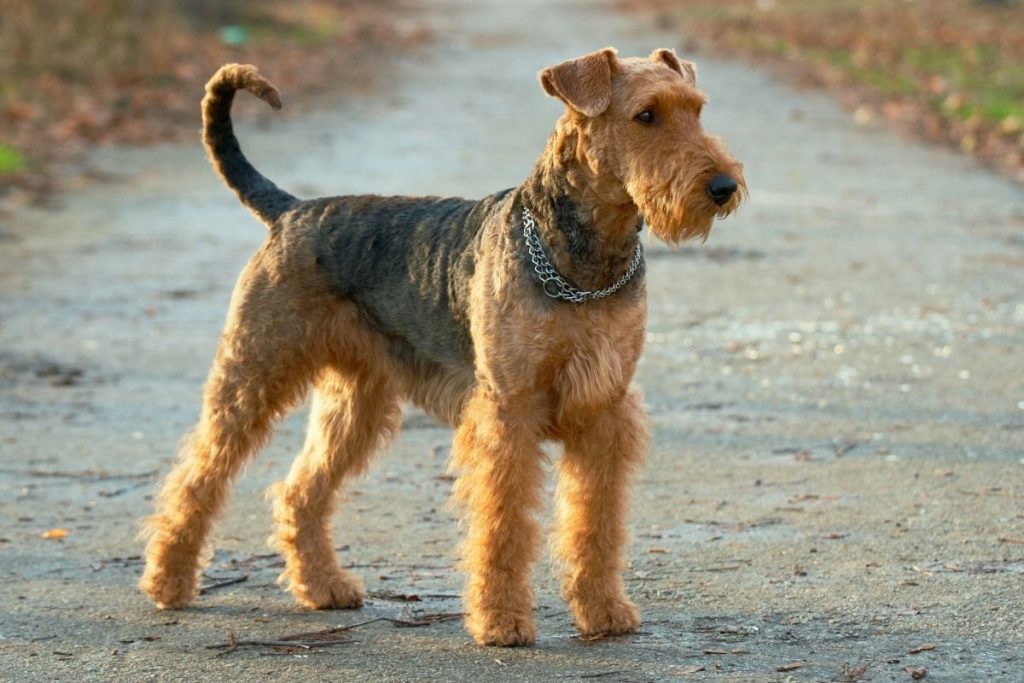
Airedale Terrier — like every other Terrier—is a hunter with a fighting spirit.
If wrestling existed in the canine world, Terriers would be strong contenders for the belt. In such a situation, the Airedale Terrier would be feared.
Airedale Terrier is the largest of all Terriers with a weight of 40 to 65 pounds and a height of 21 to 25 inches.
Heralded as the ‘King of Terriers’, his bravery is unmatched. World War I saw many Airedale Terriers playing important roles, and one of them got a posthumous award for bravery.
In the fields, Airedales were used to hunt small prey and had the ability to swim.
The average Airedale is a workaholic who doesn’t like being idle. He’s at his best when there’s work to be done.
You need to be an active person to be with an Airedale or you’d wound up being frustrated by his need for exercise.
However, the Airedale isn’t an ‘all work and no play’ dog. With his family, he loves to play and is sometimes mischievous.
Airedale shares some similar characteristics with other Terriers like barking, chewing, digging, aggressiveness towards strange dogs, and a strong prey drive.
Terriers are independent dogs too, an Airedale inclusive. Be sure you can handle these traits before you take a step towards acquiring an Airedale Terrier.
15. Weimaraner
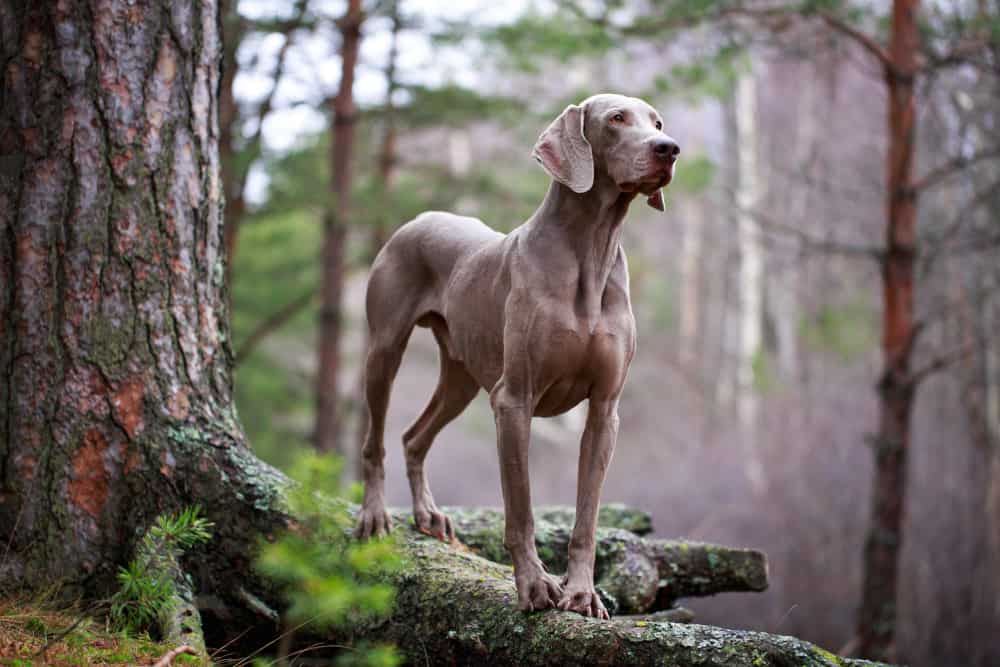
To conclude our list dogs with high prey drive is the Weimaraner, a dog breed from the 19th century who tackled and overcame equally big games like bears and wolves.
This ‘Silver Ghost’ terrified animals in German woods with his energy, endurance, and courage.
The Weimaraner’s good qualities make some believe he came perfect.
He’s friendly with almost everyone he meets, yet is fearless enough to stand his ground in a fight.
His alertness makes him a good watchdog, and he’s quick to obey. Weimaraner is a good family companion who makes your time worthwhile.
There’s the other side of the coin to consider, though. His intelligence and independent spirit make him want to be the leader of the pack, and if you give in to his whims he will be.
He’s also tough-headed in nature and may resist training. Not to mention his high prey drive which puts cats and other pets at risk.
Like every other pet, he needs to be trained.
High Prey Drive Dogs FAQs
How do you know if your dog has a high prey drive?
A dog with a high prey drive finds it almost impossible to resist the urge to go after a prey. They’d move at the sight of a small animal like a squirrel or cat.
Sometimes, they even chase after a moving car or a skateboarder.
What is the difference between aggression and prey drive in dogs?
Prey drive is a canine instinct that makes a predator go after game. Aggression is often developed as an emotional reaction. A dog who’s afraid or angry may get aggressive.
Dogs with high prey drives are considered aggressive by many people. However, while some have aggressive tendencies, these two traits are not the same.
Why is my dog’s prey drive so high?
If your dog was bred to be a hunter, herder or even a worker before becoming a companion, he’d have a high prey drive.
Dogs who were bred for hunting and herding always have a high prey drive.
This instinct helped hunting dogs track and capture games while it helped herders ward off wild animals like wolves and coyotes.
How do I stop my dog from high prey drive?
While you cannot get rid of high prey drive in dogs, there are many ways you can take your dog and call him back to order. It starts by observing your pet to understand how strong his prey drive is.
Then, take some other steps like distraction techniques to take your dog’s mind off the prey, teach them some recall commands and give them a good treat when they comply.
Can a dog with high prey drive live with a cat?
If you raise your dog alongside the cat when both of them were babies, the dog may live peacefully with the cat, even a dog with high prey drive.
However, you should supervise early interactions between the dog and the cat and be sure the dog sees his feline counterpart as a family before you get comfortable.
How do I stop my dog from stalking behavior?
Stalking can mean a lot of things with a dog, from harmless play to a predator sighting prey. Just like digging, continuous barking, and other dog habits, stalking can be controlled with training.
Wrap pUp…
Unless you’re a hunter, the strong prey drive of your dog may be a cause for concern.
Not only is it embarrassing to struggle with your canine outdoors, it poses a risk to your dog too.
There’s not much you can do to get rid of this drive, though. It is instinctive. If you know you can’t handle these canines, it is best to look for a dog with a low prey drive.
The good news is that dogs with high prey drive can be controlled. Early socialization, for instance, can make your hunting dog live side by side with a cat.
Keeping him in an environment with minimal distractions help as well. Other safety measures like fences and leashes are important.
You May Also Like: Strongest Dog Breeds in the World

